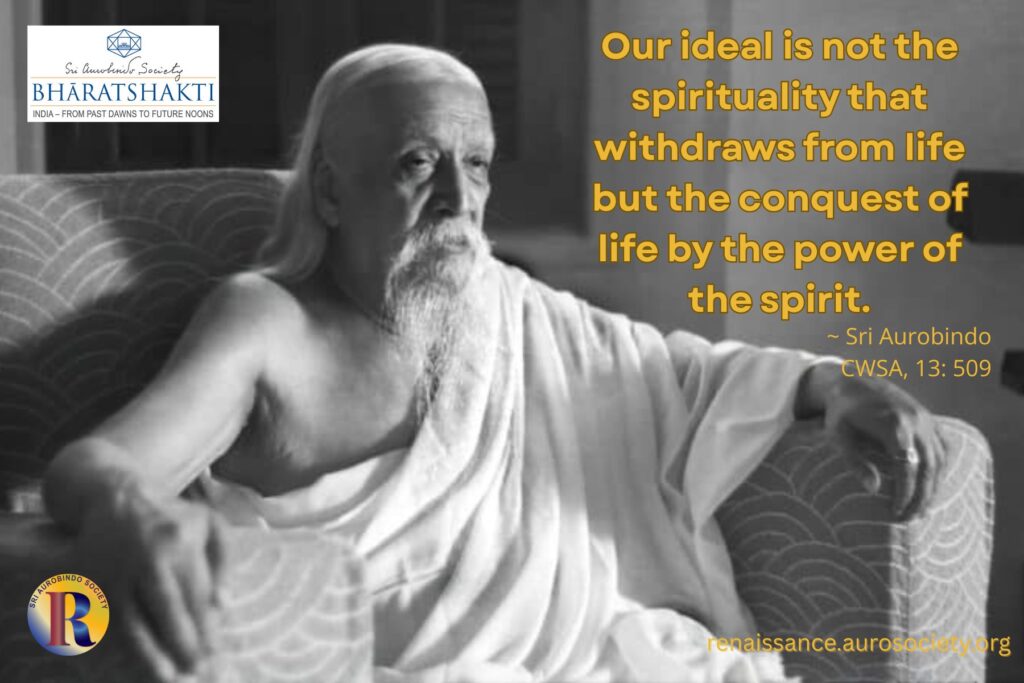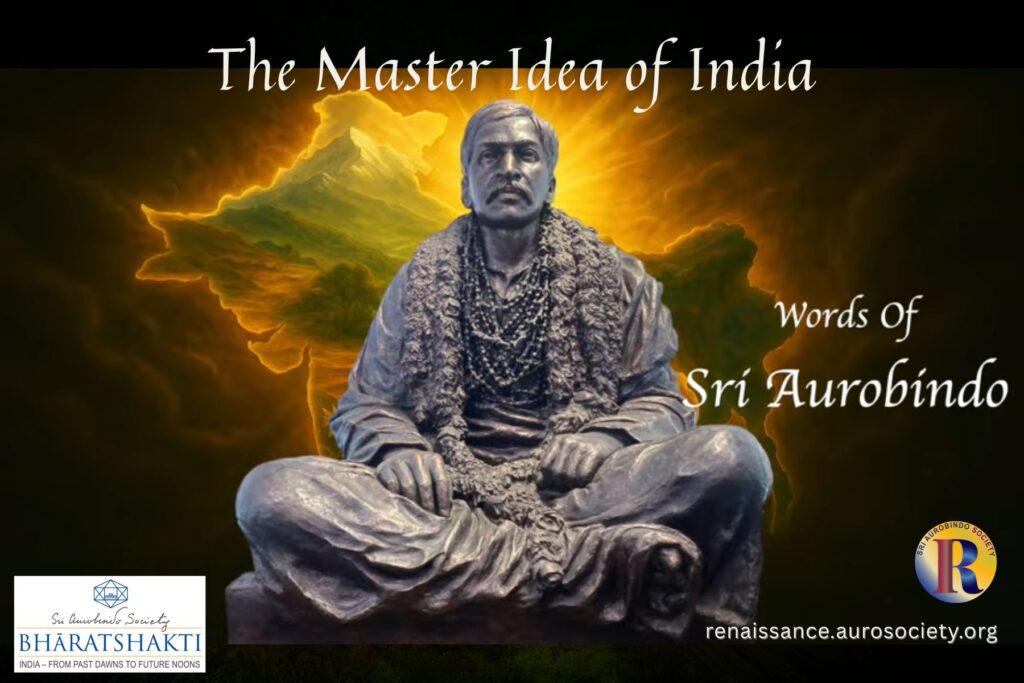Volume V, Issue 10
Author: Stella Kramrisch
Editor’s Note: For the Book of the Month feature, we have made a selection on the sacred art of dhūlichitra. The art of dhūlichitra finds a mention in several ancient Indian treatises on art. These include Vishnudharmottara, Silparatna of Srikumara, and Abhilashitartha Chintamani of King Someswara III. Dhūlichitra are images or paintings or drawings executed with dry and wet powders or paste on floors.
The selection is from the book titled Exploring India’s Sacred Art: Selected Writings of Stella Kramrisch. Barbara Stoler Miller edited this volume and also wrote a biographical essay on Kramrisch. It was published by Indira Gandhi National Centre for the Arts, New Delhi and Motilal Banarasidass Publishers Pvt. Ltd., Delhi (1994). The selected excerpt appears on pages 105-107 of the book. The tradition of dhūlichitra is known by many names such as kolam, rangoli, alpona, mandana, etc. Kramrisch speaks of these as ‘magic diagrams’.
We begin with a meditation on these lines from Sri Aurobindo’s Savitri:
An attempt, a drawing half-done is the world’s life;
Its lines doubt their concealed significance,
Its curves join not their high intended close.
Yet some first image of greatness trembles there,
And when the ambiguous crowded parts have met
The many-toned unity to which they moved,
The Artist’s joy shall laugh at reason’s rules;
The divine intention suddenly shall be seen,
The end vindicate intuition’s sure technique.
~ CWSA, Vol. 33, p. 100
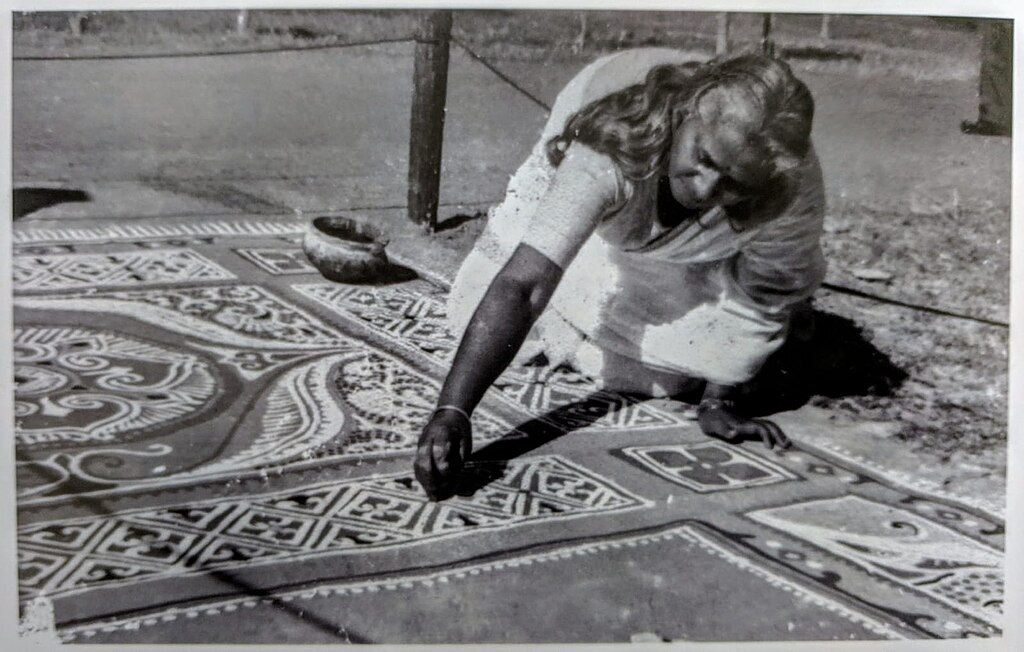

The Art Ritual of Women: Magic Diagrams
The surface for a painting, as a rule, is vertical; if it is horizontal it will be a ceiling or the ground. Classical antiquity had use for pictorial mosaic floors. India knew floor paintings (dhūli-chitra) and to this day they are executed on the ground, mainly with white rice paste but also with coloured powders. They are painted in tribal societies as magical diagrams, in different colours. The magic function of art in India is vested in the diagrams, primarily drawn on the floor.
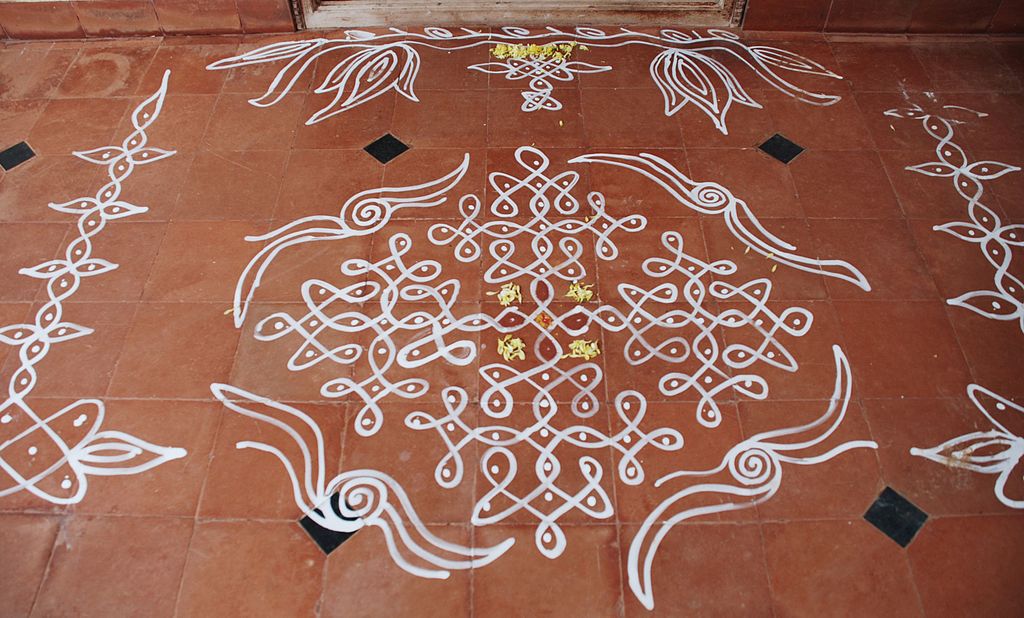
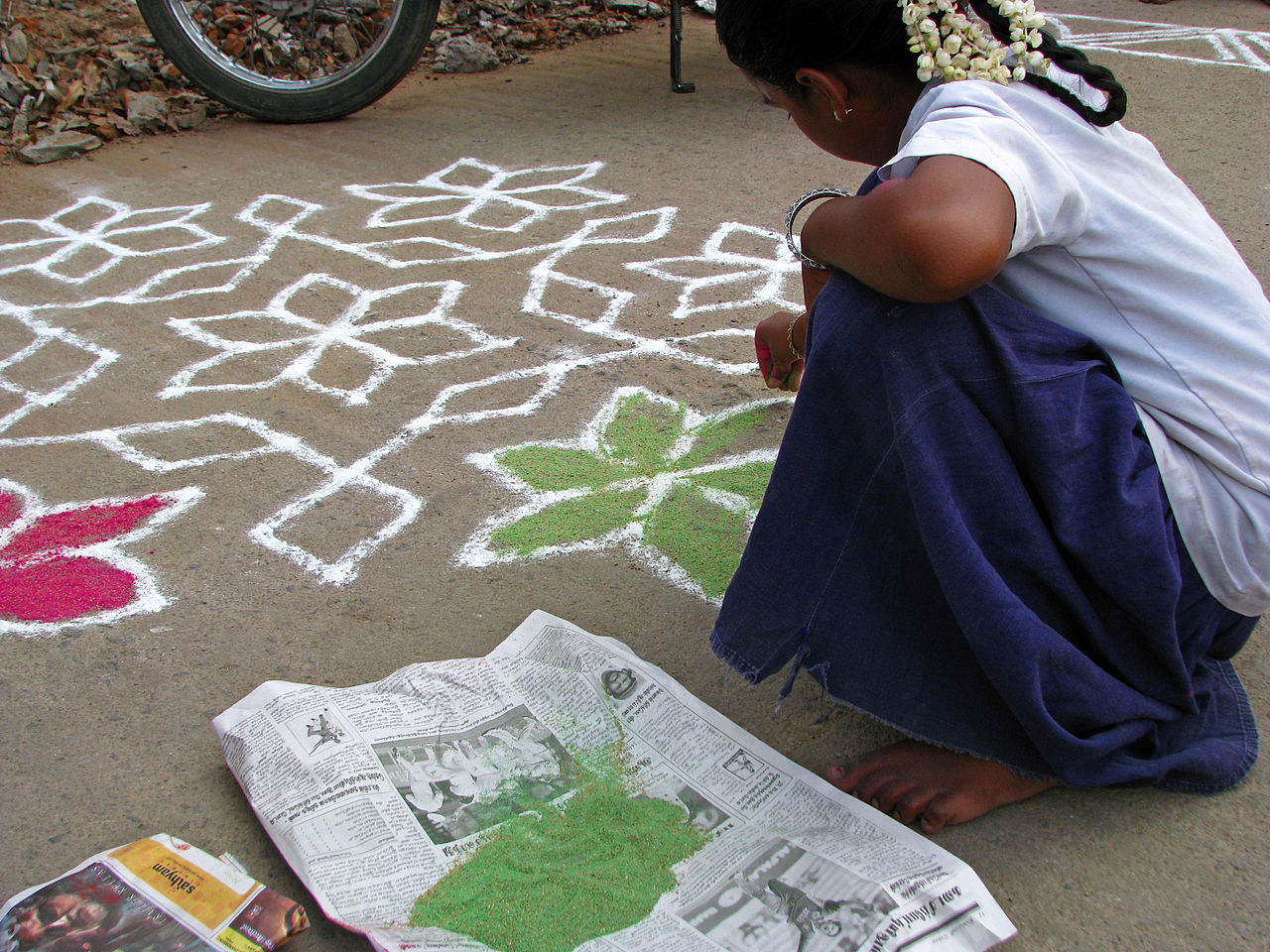
The art of painting on the floor in rural India is the prerogative of women. Its traditions are handed down from mother to daughter… The women learned it ultimately from traditions more ancient than the [Vedic times]… and they elaborated them in forms by which the floor is covered with the magic potency in patterns peculiar to each part of India. The material itself of these magic diagrams, the rice powder, is felt to have magical powers. […]
Rice powder acts magically. It scares away evil spirits. The designs drawn with it on the floor have magical power. They are essentially diagrams. Within the confines, within the more or less intricate geometrical lines of the diagram an invoked presence finds its allotted place. Its power is confined and thereby held in its place and for the purpose for which the diagram was drawn. The magic diagram makes it possible for power to be present, and it brings this presence into the power of the person who has made the diagram.
Also read:
Embracing Life in Its Many Colours and Hues
Apart from diagrams drawn by women, yantras, or magical diagrams are, also part of Tantric Hindu practice. A mandala is such a magical diagram. Mandalas are widely used in Tantric Buddhism. They determine the composition of one of the most characteristic and elaborate types of Buddhist paintings. […]
The floor designs drawn mostly freehand by women with rice paste or powder on the earthen ground range from geometrical diagrams by themselves to their association with other symbols such as footprints—which are those of the Great Goddess. These spellbinding configurations are known under many names, such as kolam, mandana, aripana, according to the style and region in which they evolved.
Originally far removed from decoration, all these ritual magic designs are forms of a will directed to an end which is to confine and control a supernatural power and to isolate it from the ground. The effect of these symbolic shapes is at one with their efficacy. They do not form abstracts patterns for they are the shape of conceptions. They are intuited and functional diagrams transmitted by women.
Some of these designs are drawn every morning or in the evening; others at each sacrament of life (saṃskāra), at the passage from one state of life to another. They are drawn at the birth of a child, at the boy’s investiture with the sacred thread, and the time of marriage. Others are drawn as acts of devotion when taking a vow (vrata) to achieve a desired result. These are drawn on certain days of the year of special significance in the course of the sun.
“Art in India, contrary to a common idea, dwelt much upon life; but still its highest achievement was always in the field of the interpretation of the religio-philosophical mind and its whole tone was coloured by a suggestion of the spiritual and the infinite.”
(Sri Aurobindo, CWSA, Vol. 20, p. 206)

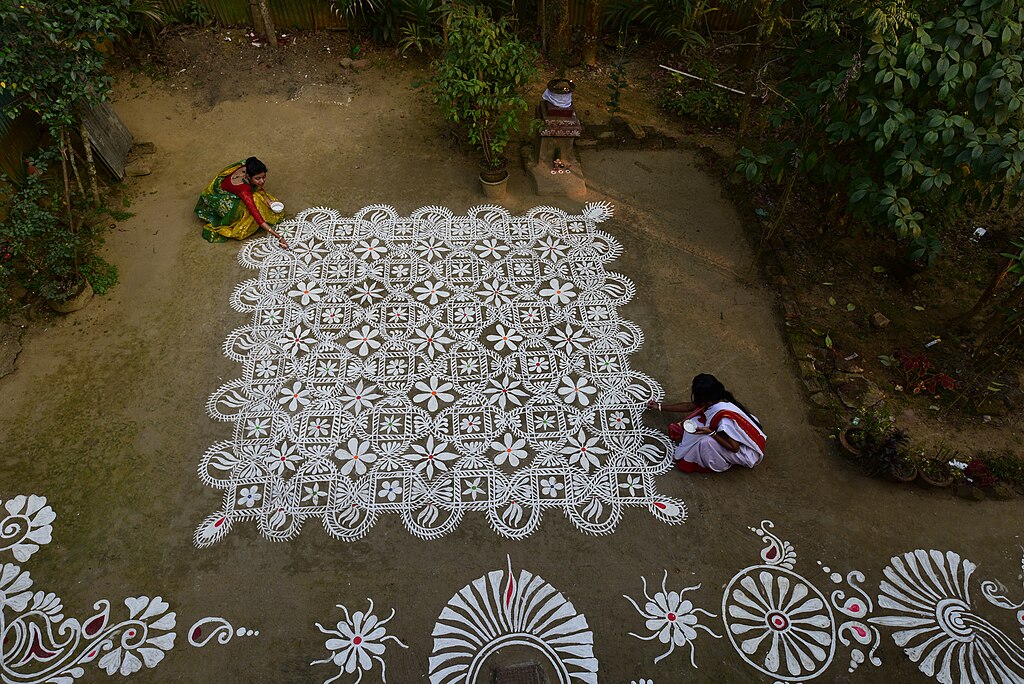
The vrata alpona and aripana are richest in design and connotation. The sun, the moon, the stars, the earth are integrated in them and also the things desired by the young girl who draws them, ornaments, a mirror and the like; and the whole cosmos is conjured up to bless and fulfill a young girl’s wish—for even a simple wish is not to be fulfilled if no effort is made at the right time to communicate with the powers that work in heaven and on earth.
Here it is the magic circle, in other designs—the sacred square, a concatenation of curves or an intersection of polygons—that encloses the magic field. Into it the power of the god is invoked. It is assigned to its enclosure, it is spellbound. It cannot escape; it is controlled. It is held in its confinement, bound in a plane by the outline of the enclosure so that it cannot escape into the ground where like lightening, it would be rendered impotent.
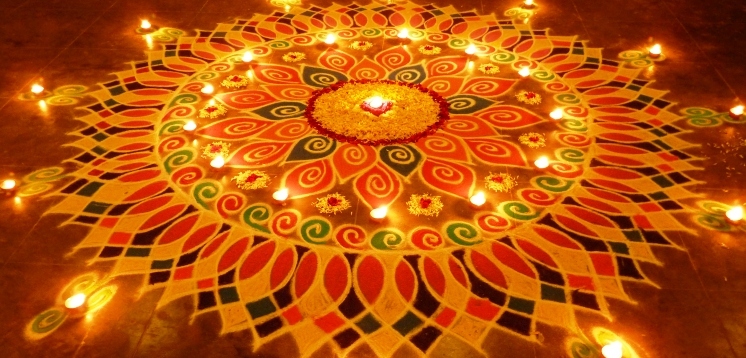
***
The most ancient Sanskrit treatise on Indian painting prescribes the worship of the sun god through an eight-petaled lotus flower drawn on the ground. Several other purānas speak of the art of drawing the sun on the ground and that the sun was worshiped in a circle in early days….The drawing of a magic diagram on the floor became essential in building a Hindu temple.
The power of the supernatural is believed to be controlled magically and made effective at a given spot and time. The art of floor painting is a visual form of magic, a delineation and coercion of the presence of the numinous. Its diagrams avoid becoming stereotyped, they are enriched and evolve where, as in the vrata alpona of eastern India, the hopes and wishes of the artist are precipitated into the design on the floor.
~ Design: Beloo Mehra

